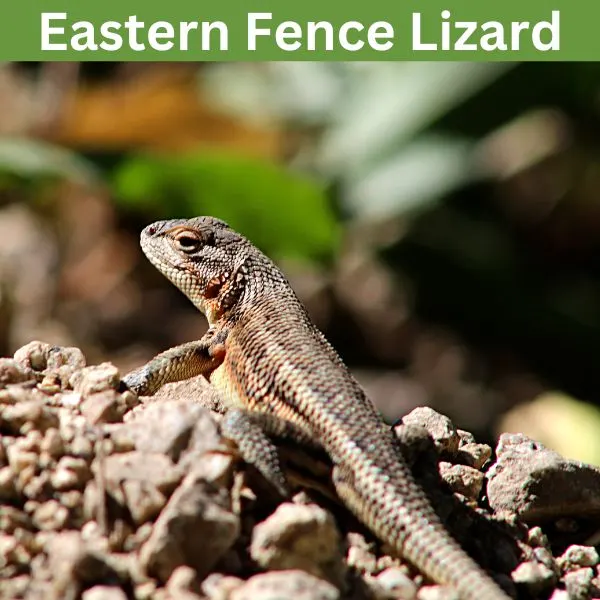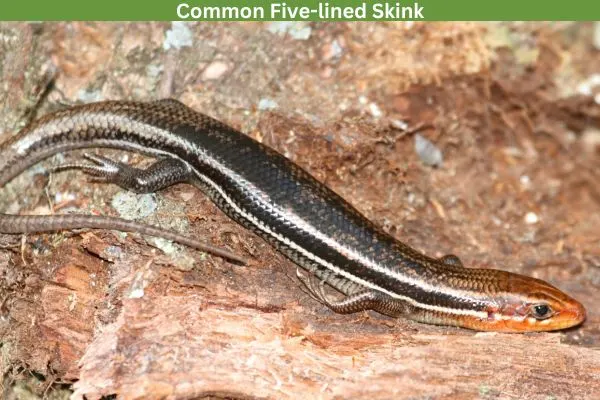Pennsylvania, teeming with diverse wildlife, hosts around seven distinct species of lizards. In addition to these fascinating creatures, the state’s wilderness is home to a variety of snakes and turtles, contributing to an intricate and thriving ecosystem.
Gaining knowledge about the various lizards in Pennsylvania can significantly enhance your ability to spot and identify these reptiles in their natural habitat.
Although some lizards may bear close resemblances, careful observation can reveal subtle differences that aid in distinguishing one species from another. An understanding of a lizard’s behavior, habitat preference, and geographical range can also be instrumental in their identification.
In this guide, we’ll explore the world of the seven lizards found in Pennsylvania, shedding light on their unique characteristics. While most of these lizards are native to the region, a few have managed to establish populations within this state, adding to its rich reptilian diversity.
Table of Contents
Lizards in Pennsylvania
1. Eastern Fence Lizard

- Experience Level: Intermediate
- Family: Phrynosomatidae
- Scientific Name: Sceloporus undulatus
- Other Names: Northern fence lizard, gravid lizard, pine lizard
- Adult Size: 4 to 6 inches
- Lifespan: 5 to 7 years
- Average Price Range: $20
Eastern Fence lizards are most commonly found in the southern areas of Pennsylvania. They prefer to live in forest habitats, with sandy soil, that have plenty of debris like logs, rock piles, and leaf litter. Mornings are the best time to see these lizards sitting on trees, fence posts, or rocks enjoying the sunlight before it gets too hot.
Under ideal conditions, the Eastern Fence Lizard can grow up to 8 inches but typically grow between 4 to 6 inches long. These lizards are seen in various shades of gray and brown with keeled, snake-like, scales.
Females have dark, wavy lines running across their backs. Both males and females have pale blue on their throats and bellies. However, males have darker more greenish-blue coloring on the sides of the belly, especially during the summer.
Fence Lizards are insectivores so their diet consists of arthropods like centipedes, ants, spiders, and mites.
2. Northern Coal Skink

- Experience Level: Intermediate
- Family: Scincidae
- Scientific Name: Plestiodon anthracinus
- Other Names: n/a
- Adult Size: 5.1 to 7.1 in. (13 to 18 cm.)
- Lifespan: 6 years
- Average Price Range: n/a
Northern coal skinks are common in Pennsylvania, found across the central, and northern regions of the state. This species lives in open places with lots of rocks and logs for them to hide in. The Northern coal skink lives in a variety of habitats like valleys, creeks, and springs.
This lizard has dark lines that run down its body, and a dark coloring of gray, olive, or brown. In the mating season, males will have a red coloring on their face, and chin. They have small limbs, and like other skinks have a blue tail when young.
Skinks are able to lose their tail and can grow them back, which helps them survive predatory encounters. The northern coal skink is secretive and may hide in leaf litter to avoid being spotted by humans, and predators.
3. Common Five-lined Skink

- Experience Level: Intermediate
- Family: Scincidae
- Scientific Name: Plestiodon fasciatus
- Other Names: American five-lined skink
- Adult Size: 4.9 to 8.5 in. (12.5 to 21.5 cm)
- Lifespan: 6 years
- Average Price Range: $12
Common five-lined skinks are native to Pennsylvania and are found in most of the southeastern United States. This species lives in woodlands, rocky habitats, and places near water sources. The winter is when this species becomes inactive to hide out in the cold. The peak of summer’s heat is also when lizards become less active.
Common five-lined skinks are named after the five lines that run down their back. Along with their line pattern, this lizard has dark black, or tan coloring. Their tails will be blue when born, which fade with age. Male lizards of this species are typically larger than females.
When not active this lizard remains dormant under rocks, logs, or other natural debris. They nest in deep soil cavities and lay their eggs in spring or at the start of summer. In the breeding season, this lizard can get aggressive, and territorial. They are seen during the day, hunting for lizards, small mice, beetles, cricket, and other insects. This lizard will also eat fruit and vegetable scraps.
4. Broad-headed Skink

- Experience Level: Intermediate
- Family: Scincidae
- Scientific Name: Plestiodon laticeps
- Other Names: Broadhead Skink, Red-headed Scorpion
- Adult Size: 5.9 to 13 in. (15 to 33 cm.)
- Lifespan: 4 to 8 years
- Average Price Range: n/a
Woodlands with lots of tree foliage are common places where the broadhead skink lives. Native to Pennsylvania, this lizard is sighted often in the southeastern corner of the state. The broadhead skink enjoys climbing trees and is semi-arboreal.
This lizard is named after its broad, triangular head. They have olive, green, or tan coloring with smooth-looking scales. The face of this lizard turns red during the mating season. This species is also one of the largest lizards in Pennsylvania.
Broad-headed skinks lay their eggs in moist soil during the summer and stay with them until they hatch. When born blue coloring appears on their tail, which helps protect their vital organs from predators. A very common species, this skink spends its day feeding on insects, and spiders.
5. Italian Wall Lizard

- Experience Level: Beginner
- Family: Lacertidae
- Scientific Name: Podarcis siculus
- Other Names: Ruin lizard
- Adult Size: 3.5 in. (9 cm.)
- Lifespan: 13 years
- Average Price Range: n/a
The Italian wall lizard is not native to Pennsylvania but has been sighted in some southeastern regions of the state. This species often breeds in residential areas, using homes, or other buildings for shelter. Europe is where this species is native to, but they have been introduced to the United States.
Italian wall lizards have green coloring, with brown, black, and cream markings on them. Their heads are pointed, and their feet have thin, with sharp claws. The underside of this specie is white, with orangish markings appearing under its neck.
This lizard is active during the day, often seen on buildings, large rocks, and other climbable structures. They spend their time looking for food and enjoys grassy places for them to hide. Small birds, snakes, and large spiders are what prey on this lizard.
6. Mediterranean House Gecko

- Experience Level: Beginner
- Family: Gekkonidae
- Scientific Name: Hemidactylus turcicus
- Other Names: Turkish gecko
- Adult Size: 3 to 6 in. (7.62 to 15.24 cm.)
- Lifespan: 9 years
- Average Price Range: $10
The Mediterranean house gecko is a rare species to find in Pennsylvania and has managed to build a population in a few southeastern regions in the state. This lizard is native to the Mediterranean but has been transported to several regions across the world. Near humans, in shrublands, and around old buildings are common places this lizard is found.
This lizard is medium-sized, with tan, or cream-colored skin. They have white and dark spots covering them, with granular skin. The Mediterranean house gecko has very bumpy skin, with toe pads on their feet.
A nocturnal lizard, this species feeds on things like spiders, beetles, grasshoppers, and other bugs. They use their eyesight to track prey, and will even eat dead bugs they find. When mating this species emits a clicking and squeaking sound to attract a partner.
7. Common House Gecko

- Experience Level: Beginner
- Family: Gekkonidae
- Scientific Name: Hemidactylus frenatus
- Other Names: Wall gecko, Moon lizard
- Adult Size: 3 to 6 in (7.62 to 15.24 cm.)
- Lifespan: 7 years
- Average Price Range: $10
The common house gecko is not a native species to Pennsylvania but is an invasive lizard species to the region. This species originates from southeastern Asia, found in places like Thailand, and Malaysia. It is believed they found their way to the United States by getting onto boats from trade.
Common house geckos are grayish, to yellow in color. They have specks on them and slender bodies. Their eyes have elliptical pupils, and their skin is very granular. Pads appear on this gecko’s feet, which help them climb around.
When the sun goes down this species comes out, and they are seen most often at midnight. This species spends its nights hunting for small insects, and other invertebrates.
FAQ
What lizards are invasive in Pennsylvania?
The two gecko species and the Italian wall lizards that live in Pennsylvania are not native and are invasive species to the region. Lizards like these commonly find their way into new areas by catching rides on cargo shipments or being transported and released by humans.
In Pennsylvania when are lizards active most?
The spring, and summer months are when lizards are most active in Pennsylvania. This period is when lizards breed and also begin to hatch from their eggs. Each species will have its own preference for the time of day, and year it prefers to be active.
Are there dangerous lizards in Pennsylvania?
There are no dangerous lizards in Pennsylvania, and all of the are generally harmless to humans, even pets. Lizards can contain germs, so you should always wash your hands after handling them. If spotted most lizards will flee, but if they do bite their nips are very harmless.
Wrapping up
Lizards, like all animals, are essential to their ecosystem. Animals like hawks, skunks, rats, spiders, and even other lizards use these reptiles as food to eat. Population decline in lizards may occur, as these fragile species can be affected by factors such as habitat loss, pollution, and humans capturing them from the wild.
Taking a closer look at the lizards in Pennsylvania will expose you to a world of wonder. As you learn more about these mysterious reptiles, you will find there are countless amazing lizard facts that will intrigue you. With research and commitment, some lizards even make good pets.
Lizards in other states
